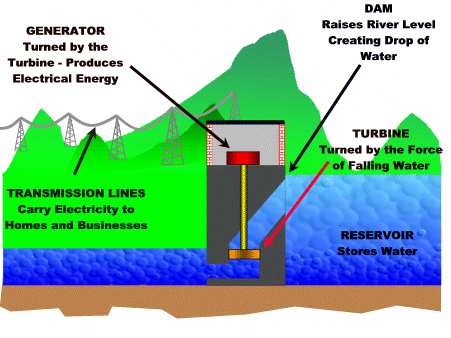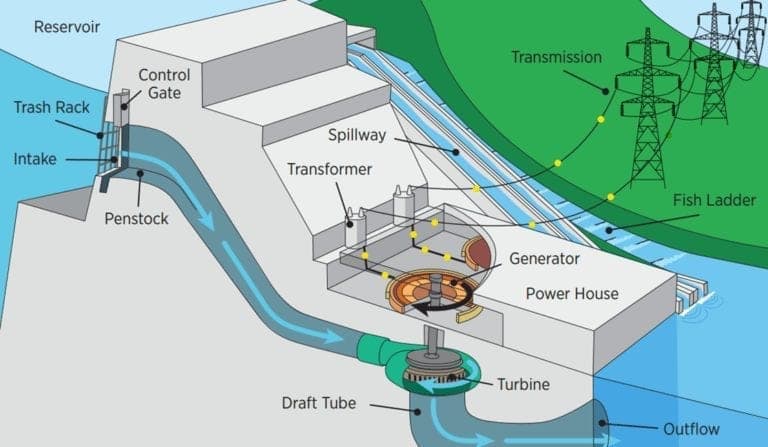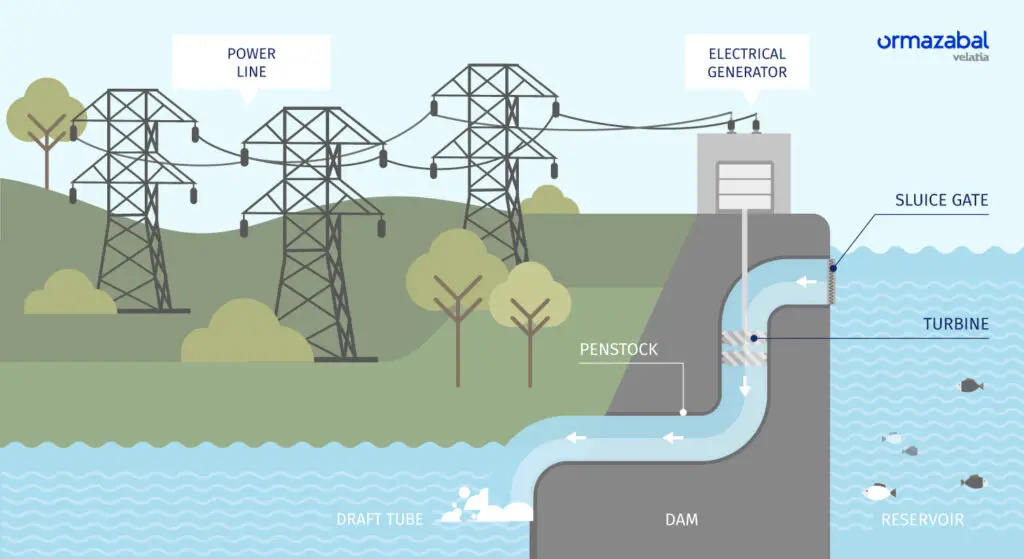Hydro plants produce electricity using water power. They harness the energy of flowing water.
Hydro plants, also known as hydroelectric plants, are a crucial part of our energy system. They convert the kinetic energy of moving water into electrical energy. This process involves using turbines and generators. Hydro plants offer a renewable and clean source of power.
They reduce reliance on fossil fuels and help lower greenhouse gas emissions. Additionally, hydro plants can provide a stable and reliable power supply. These plants also play a role in water management, aiding in flood control and irrigation. Understanding what hydro plants do helps appreciate their importance in sustainable energy solutions. This blog will explore their functions and benefits in detail.

Credit: www.wvic.com
Introduction To Hydro Plants
Hydro plants use water to make electricity. They are important for clean energy. Water flows through turbines. This movement creates power. Hydropower is very efficient. These plants can start and stop quickly. They help balance the power grid. Hydro plants are a renewable energy source. They do not pollute the air. They use the natural water cycle.
Hydropower has been used for a long time. Ancient Greeks used water wheels. They ground grain into flour. In the 1800s, people made the first hydroelectric plants. Niagara Falls was one of the first. It started in 1881. Hydropower grew quickly. Many countries built dams. These dams store water. They help control floods. They provide water for farms. Today, hydropower is used worldwide.
Types Of Hydro Plants
Run-of-river systems use the flow of the river. They do not store water. They take water from the river. Then, they send it through turbines. The turbines spin and make electricity. These systems are simple and small. They cause less harm to nature. They need a constant water flow.
Reservoir systems use large dams. They store water in big lakes. When power is needed, water is released. This water spins turbines. Reservoir systems can store water for dry times. They are very powerful. They can support large cities. But, they can change the river’s flow. This can affect wildlife.
Pumped storage is like a battery. It stores energy for later use. Water is pumped to a high reservoir. This is done when power is cheap. When power is needed, water is released. It flows to a lower reservoir. This flow spins turbines and makes electricity. Pumped storage helps balance the grid. It provides power during peak times.
How Hydro Plants Work
Hydro plants use the power of flowing water. Water from a river or reservoir moves through turbines. The turbines spin because of the water flow. This spinning is what creates energy. The process is clean and renewable.
The spinning turbines connect to generators. Generators change the movement into electricity. This electricity then travels through power lines. It reaches homes and businesses. Hydro plants can produce a lot of electricity without burning fuel.

Credit: www.perchenergy.com
Benefits Of Hydropower
Hydropower uses water to make energy. Water is a renewable resource. This means it won’t run out. As long as there is water, hydropower can make energy. This helps the Earth. It keeps the planet clean and safe.
Hydropower plants do not burn fuel. This means they produce low greenhouse gas emissions. Less pollution is better for the air. Clean air helps people and animals stay healthy. This makes hydropower a good choice.
Environmental Impact
Hydro plants generate electricity by harnessing the power of flowing water. They reduce carbon emissions and support renewable energy goals.
Effects On Ecosystems
Hydro plants can change natural water flow. This affects fish and plants. Some fish can’t swim upstream. They may not reach breeding grounds. It also changes water temperature. Warmer water harms cold-water fish. Plants near rivers may get less water. They might die or grow poorly.
Mitigation Strategies
Fish ladders help fish swim upstream. Special gates control water flow. This protects plants and animals. Monitoring programs check ecosystem health. They help make quick changes. Habitat restoration projects fix damaged areas. They plant trees and clean rivers.

Credit: www.usgs.gov
Technological Innovations
New turbines are more efficient. They produce more power with less water. This means better energy. Less waste. Modern turbines also have fewer moving parts. This makes them last longer. They need less maintenance. These advancements help hydro plants work better.
Smart grids help manage energy. They make it easier to balance supply and demand. Hydro plants work well with smart grids. They can quickly adjust power output. This helps keep the grid stable. Smart grids also improve energy storage. Better storage means less wasted power.
Challenges And Limitations
Building hydro plants is very expensive. You need a lot of money at the start. The cost of planning and construction is high. It takes years to build. Workers need to be paid well. Materials are costly too. Maintenance also costs a lot.
Hydro plants need specific locations. Not all places are suitable. They need rivers or large water bodies. The area should have a steady flow of water. Some regions do not have such resources. This limits where hydro plants can be built. Sometimes, plants affect nearby ecosystems. This can be a big problem.
Future Of Hydropower
Hydropower can grow in many regions. Africa has many rivers. Asia also has many rivers. These places can make more electricity. Small hydropower plants can help small towns. Pumped storage can store energy for later use. This helps when the sun is not shining.
Hydropower is very important for clean energy. It helps reduce carbon emissions. Many countries want to use more renewable energy. Hydropower is a reliable source. It can work with solar and wind power. This makes the energy system stronger. It can also help in energy storage. This is key for a green future.
Frequently Asked Questions
What Is A Hydro Plant?
A hydro plant generates electricity using water flow. It converts kinetic energy from flowing water into mechanical energy, then into electrical energy.
How Do Hydro Plants Work?
Hydro plants use turbines and generators. Water flows through turbines, spinning them. This mechanical energy is converted into electrical energy via generators.
Why Are Hydro Plants Important?
Hydro plants provide renewable energy, reducing reliance on fossil fuels. They help in lowering greenhouse gas emissions and support sustainable energy production.
Are Hydro Plants Environmentally Friendly?
Yes, hydro plants are environmentally friendly. They produce clean energy without emitting greenhouse gases. They also help in water management and irrigation.
Conclusion
Hydro plants play a vital role in energy production. They harness water power to generate electricity. This method is efficient and eco-friendly. Hydro plants also help manage water resources. They provide flood control and support irrigation. With minimal pollution, they are a sustainable choice.
Understanding hydro plants can help appreciate renewable energy. These plants are crucial for a greener future. Let’s support and promote renewable energy sources.

My mission is to help you bring the beauty of nature indoors with expert advice, detailed plant care guides, and creative design ideas.





Leave a Reply